Sept. 12 to Sept. 18
During the early 1940s, a series of suicides shocked the residents of Changhua County’s Renli Village (仁里村).
After the end of World War II, the village chief led a delegation to Nantou County’s Shoutian Temple (受天宮) and invited one of its three Xuantian Shangdi (玄天上帝, Emperor of the Mysterious Heaven) deities home to suppress the bad energy. It worked, and in 1949, Beixuan Temple (北玄宮) was built in the village after “dividing the incense ” (分香) from Shoutian Temple.
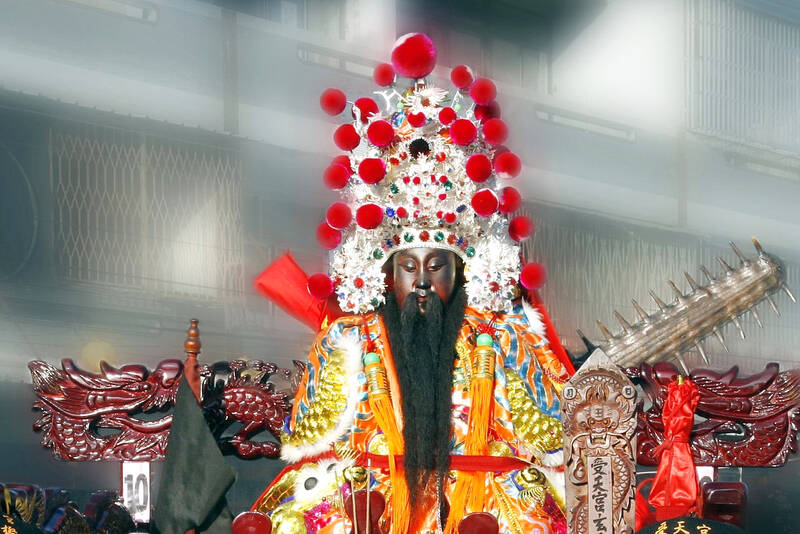
Photo: Hsieh Chieh-yu, Taipei Times
As stories about the power of Shoutian Temple spread, so too did the number of temples receiving incense from it, resulting in a number of branch temples. Sometimes people in need came to the temple, other times the deity appeared to them through spirit mediums or other miraculous feats.
Shoutian Temple was perceived as being so efficacious, that soon branch temples began to split off from other branch temples.
Changhua’s Shouming Temple (受命宮), for example, has numerous branches, all of which still make regular pilgrimages to Shoutian Temple. It’s estimated that between 3,000 and 6,000 personal and public shrines in Taiwan and abroad worship an effigy of Xuantian Shangdi, which was divided from Shoutian Temple.
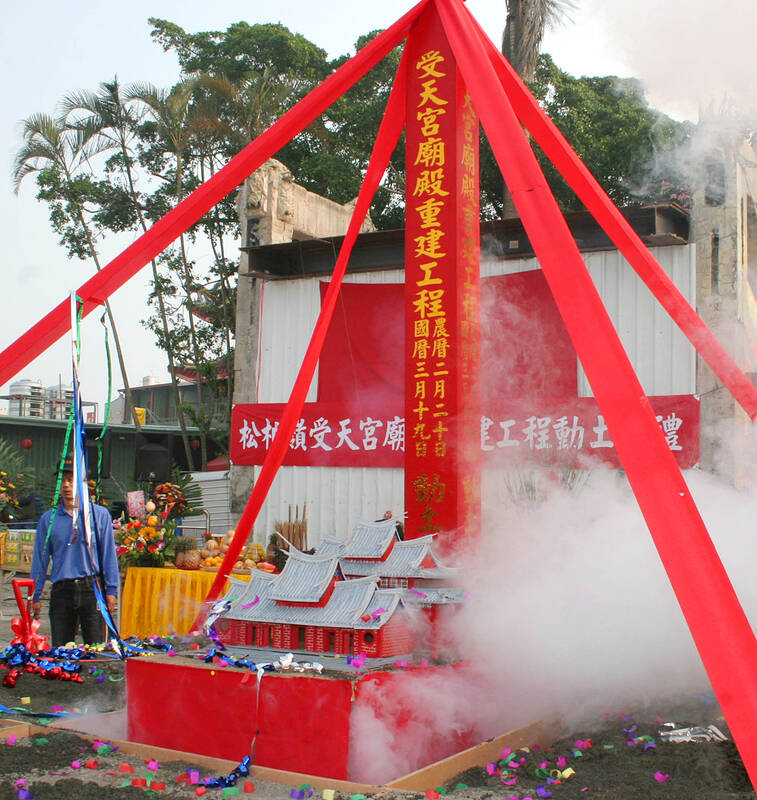
Photo: Hsieh Chieh-yu, Taipei Times
The exact number is unclear because the temple, along with its records, was destroyed in a massive fire in 2000. On Monday, the Liberty Times (Taipei Times’ sister paper) reported that the temple recently set up an online registry and interactive map, hoping that temples that divided its incense from it can add themselves to the list. As of Tuesday, the map shows 846 shrines in Taiwan, four in Malaysia and one each in Vietnam and New Zealand.
FROM OCEAN TO MOUNTAIN
Commanding a divine turtle and snake, Xuantian Shangdi was worshiped in northern China for thousands of years. Waves of immigration brought the deity south to Fujian and Guangdong, and further to Taiwan at the end of the Ming Dynasty.
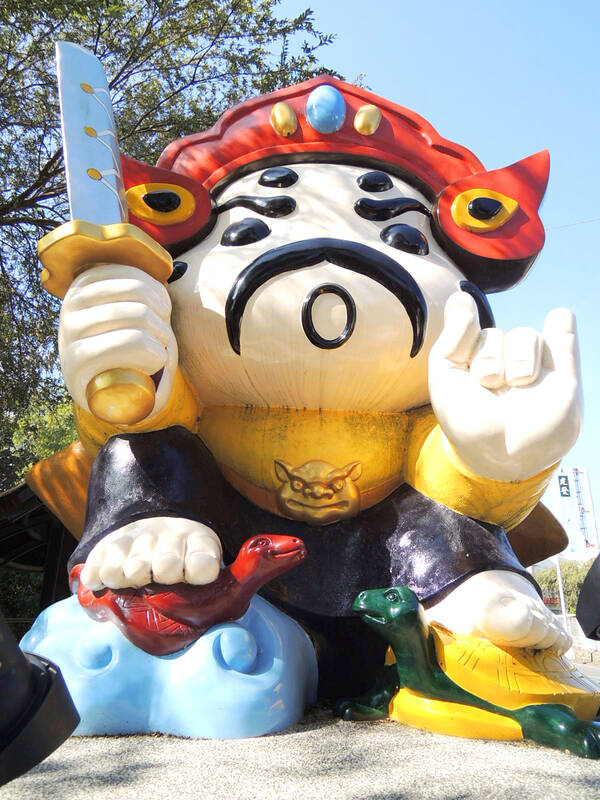
Photo: Hsieh Chieh-yu, Taipei Times
The Ming royal family revered Xuantian Shangdi as the state’s main protector. Since Cheng Cheng-kung (鄭成功, also known as Koxinga) sought to use Taiwan as a base to reclaim China for the Ming, the deity was also popular among his followers in his Tainan-based Kingdom of Tungning.
The Chinese Taoist Xuantian Shangdi Worship Promotion Association (中華道教玄天上帝弘道協會) notes that of the 26 Taoist temples built in Taiwan during Cheng’s reign between 1662 and 1683, seven of them worshiped the Emperor of the Mysterious Heaven as their main deity.
The first iteration of Shoutian Temple was built in 1657 as a crude shack around an incense bag representing the deity by Fujianese immigrants, who settled in the area for its abundant timber and rattan. They eventually abandoned the area. In 1681, nearby residents noticed a bright light coming from the shack. Seeing it as a sign, they built a small shrine to house the deity.
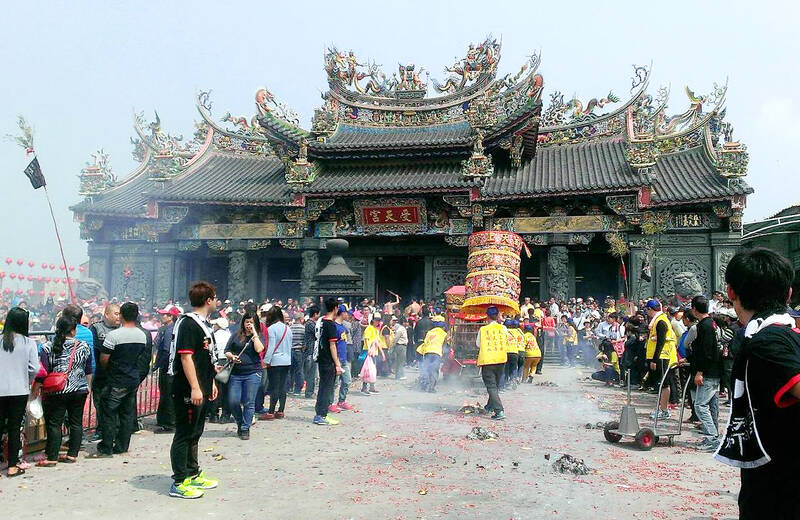
Photo: Hsieh Chieh-yu, Taipei Times
After the Qing Dynasty annexed Taiwan in 1684, they sought to promote the worship of the sea goddess Matsu instead, propagating a legend of her appearing in the Taiwan Strait during the battle to ensure their victory. While the Qing did not outright destroy Xuantian Shangdi temples, the deity’s influence and prestige dropped sharply under their influence.
While Matsu took over as protector of the seas, Xuantian Shangdi temples continued to be worshiped in the mountains. Folklorist Chien Jung-tsung (簡榮聰) posits that the pioneers may have hoped that the emperor’s mastery of reptiles could protect them against the deadly snakes in the hills. He also suggests that later immigrants from Fujian, who retained their devotion to Xuantian Shangdi and mostly settled in mountainous areas, helped these temples thrive.
In 1737, Xuantian Shangdi possessed a spirit medium and instructed locals to build a larger shrine at the current site. He also appeared as an old man with white hair, who commissioned artisans in Lukang to build the temple’s three main effigies in 1745. After they were enshrined, it was officially named Shoutian Temple — literally “receiving the heavens.”

Photo: Hsieh Chieh-yu, Taipei Times
RAPID GROWTH
Despite the Qing’s efforts, Xuantian Shangdi was still the fifth most popular main deity in Taiwan in 1918, with 172 recorded temples dedicated to him. He retained this ranking in a 1981 survey.
In 1846, with the removal of travel restrictions between Taiwan and China, a group of locals headed to Fujian to divide the incense from the original temple. The temple saw a surge in worshippers around that time, leading to significant expansion in 1851, 1887 and 1924. The final expansion before the fire was carried out in 1973.
As the temple’s reputation grew, numerous villages in central Taiwan came to divide its incense, making it the primary Xuantian Shangdi center of worship in the region. But its divisions only grew to its current number and expanded to the rest of the nation after the temple formally established an administrative council in 1953 and management committee in 1957.
Shoutian Temple’s golden years, according to a study by Wen Tsung-han (溫宗翰), was the 1960s and 1970s. Tens of thousands of people, including high ranking officials and influential locals, flocked to the area every 3rd day of the 3rd month of the Lunar calendar, not only to pay their respects but also to enjoy the surrounding scenery and its high quality agricultural products. In 1976, 600 Xuantian Shangdi effigies from across the country were brought there for a 10-day ceremony that garnered much media attention.
The 921 Earthquake devastated Nantou and the surrounding areas in 1999, badly damaging the temple’s columns. Before they could make repairs, a fire the following June completely destroyed the main structure. Worship continued under a makeshift metal structure until the temple was rebuilt in 2008.
The temple continues to expand its influence — its Vietnam division was only established in 2016, for example, and it would be interesting to see how high the number on the map eventually rises to.
Taiwan in Time, a column about Taiwan’s history that is published every Sunday, spotlights important or interesting events around the nation that either have anniversaries this week or are tied to current events.
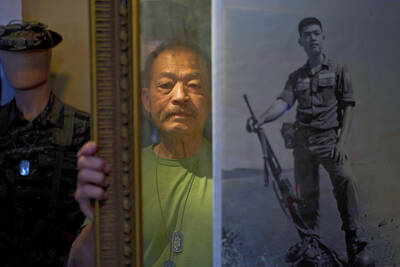
When the South Vietnamese capital of Saigon fell to the North Vietnamese forces 50 years ago this week, it prompted a mass exodus of some 2 million people — hundreds of thousands fleeing perilously on small boats across open water to escape the communist regime. Many ultimately settled in Southern California’s Orange County in an area now known as “Little Saigon,” not far from Marine Corps Base Camp Pendleton, where the first refugees were airlifted upon reaching the US. The diaspora now also has significant populations in Virginia, Texas and Washington state, as well as in countries including France and Australia.

On April 17, Chinese Nationalist Party (KMT) Chairman Eric Chu (朱立倫) launched a bold campaign to revive and revitalize the KMT base by calling for an impromptu rally at the Taipei prosecutor’s offices to protest recent arrests of KMT recall campaigners over allegations of forgery and fraud involving signatures of dead voters. The protest had no time to apply for permits and was illegal, but that played into the sense of opposition grievance at alleged weaponization of the judiciary by the Democratic Progressive Party (DPP) to “annihilate” the opposition parties. Blamed for faltering recall campaigns and faced with a KMT chair

Article 2 of the Additional Articles of the Constitution of the Republic of China (中華民國憲法增修條文) stipulates that upon a vote of no confidence in the premier, the president can dissolve the legislature within 10 days. If the legislature is dissolved, a new legislative election must be held within 60 days, and the legislators’ terms will then be reckoned from that election. Two weeks ago Taipei Mayor Chiang Wan-an (蔣萬安) of the Chinese Nationalist Party (KMT) proposed that the legislature hold a vote of no confidence in the premier and dare the president to dissolve the legislature. The legislature is currently controlled

Dull functional structures dominate Taiwan’s cityscapes. But that’s slowly changing, thanks to talented architects and patrons with deep pockets. Since the start of the 21st century, the country has gained several alluring landmark buildings, including the two described below. NUNG CHAN MONASTERY Dharma Drum Mountain (法鼓山, DDM) is one of Taiwan’s most prominent religious organizations. Under the leadership of Buddhist Master Sheng Yen (聖嚴), who died in 2009, it developed into an international Buddhist foundation active in the spiritual, cultural and educational spheres. Since 2005, DDM’s principal base has been its sprawling hillside complex in New Taipei City’s Jinshan District (金山). But